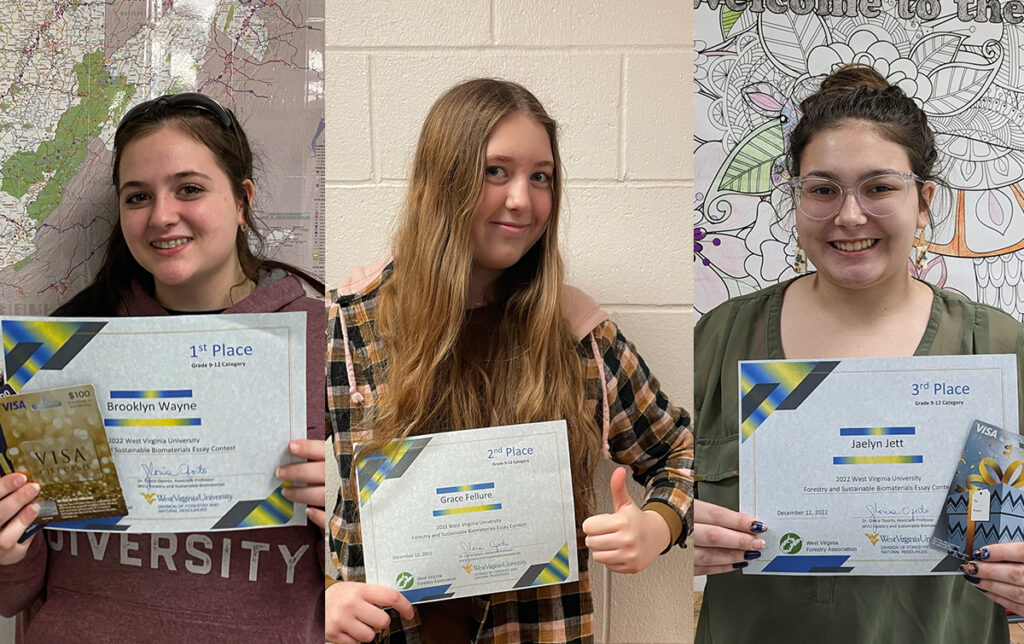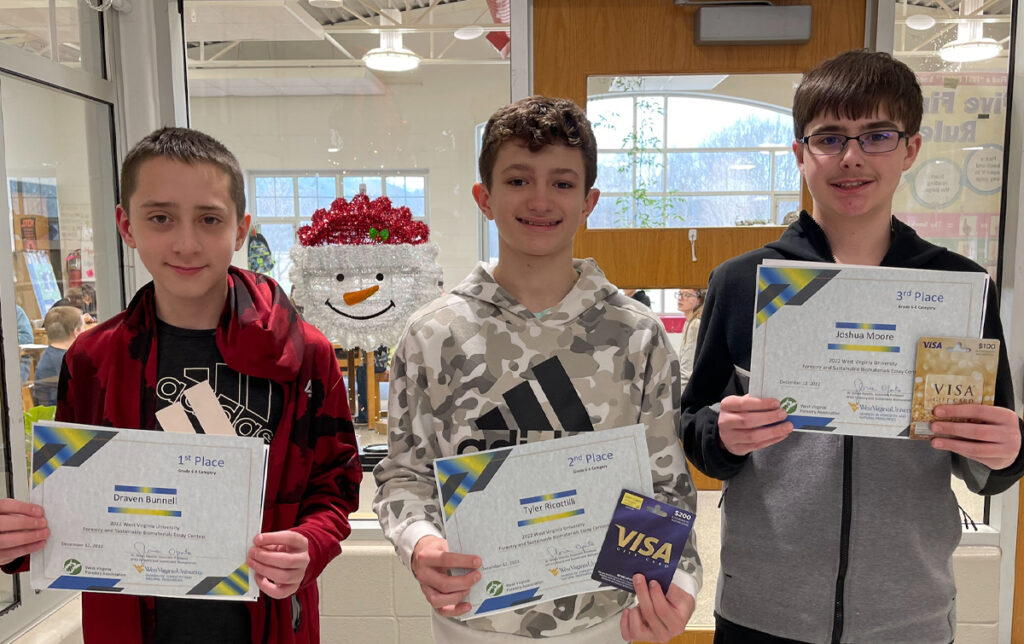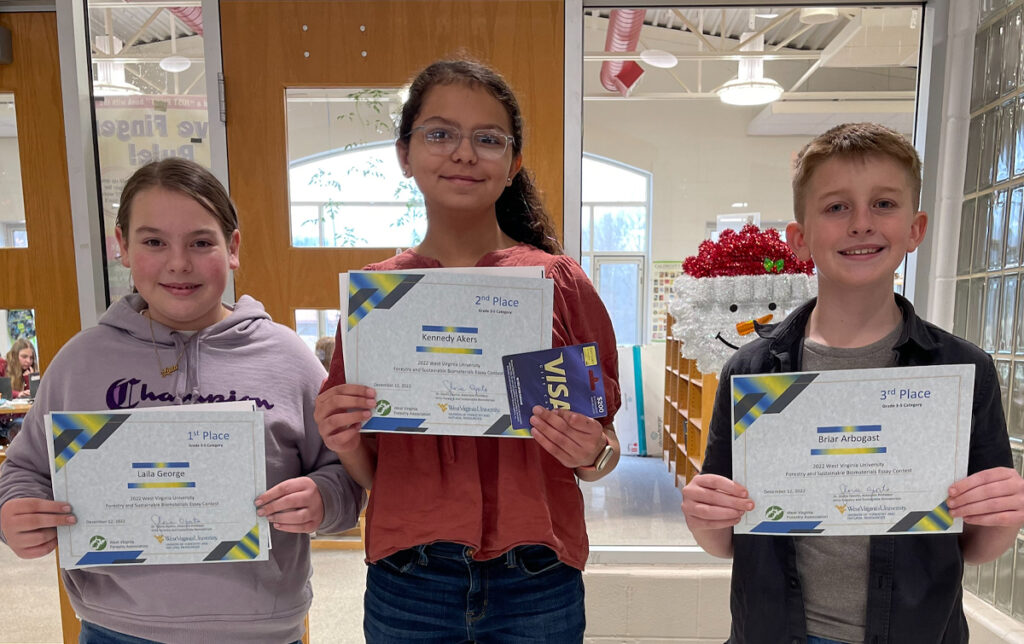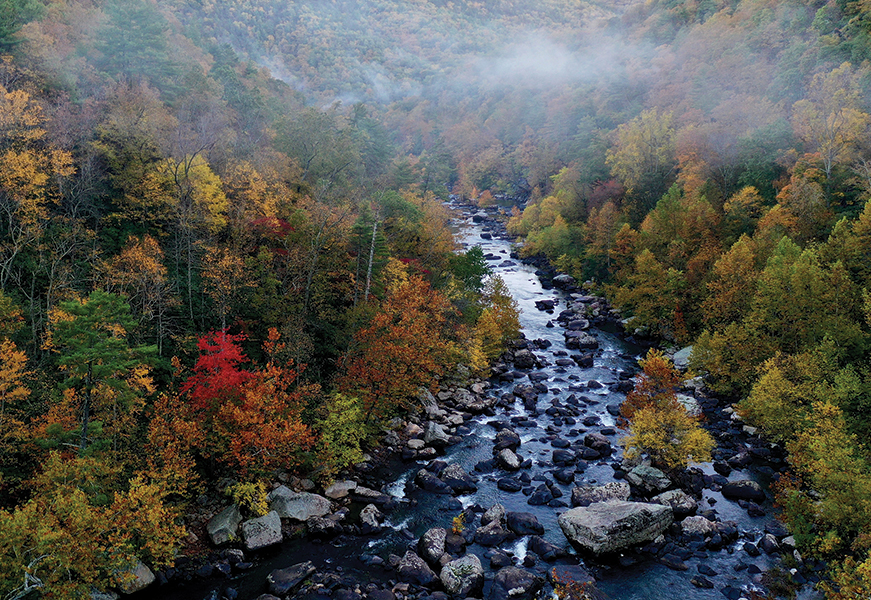The West Virginia Forestry Association teamed up with the forestry faculty at West Virginia University School of Forest Resources to conduct an essay contest. We are pleased to let our members read a few of the winning essays and categories. Each place winner received a cash award from WVFA by their sponsoring teachers throughout the state. Judges were Dr. David McGill, Dr. Kathryn Gazal, and Dr. Gloria Oporto.
We want to give our readers an understanding of how our next generation views the forest and its products.

9th–12th Grades
1st Place
Brooklyn Wayne
Tyler Consolidated High School
Teacher: Devann Fox
2nd Place
Grace Fellure
Ravenswood High School
Teacher: Jessica Conger
3rd Place
Jaelyn Jett
Calhoun County Middle High School
Teacher: Annie Jones

6th–8th Grades
1st Place
Draven Bunnell
Tucker Valley Elementary Middle School
Teacher: Courtney Nestor
2nd Place
Tyler Ricottilli
Tucker Valley Elementary Middle School
Teacher: Courtney Nestor
3rd Place
Joshua Moore
Tucker Valley Elementary Middle School
Teacher: Courtney Nestor

3rd–5th Grades
1st Place
Laila George
Tucker Valley Elementary Middle School
Teacher: Courtney Nestor
2nd Place
Kennedy Akers
Tucker Valley Elementary Middle School
Teacher: Courtney Nestor
3rd Place
Briar Arbogast
Tucker Valley Elementary Middle School
Teacher: Courtney Nestor
Laila George, 3rd–5th Grade – 1st Place
I picked my tree because at the time nobody had it. I found my tree on the school playground and it was very bright green. My tree was tall it had moss and a lot of sap on it with lichen. I’m pretty sure my tree is a spruce tree; a spruce tree is a type of pine tree. There were a few bugs around it and some birds. Some of pine needles are off in the middle of September. The spruce tree is so cool to write about, it is a really interesting to learn about.
My tree has a weird sent to it, it’s kind of like sap mixed with a very strong mint sent, it kind of hurt my nose. The sap was sticky and stinky it broke my pencil, the sap was a cloudy color. The pine needles are very spiky, they kind of poked my hand and hurt it so be careful. The bark of a spruce tree is hard to pick off but I got some off.
I was really surprised that the spruce tree was that cool it was really fun.
Here are some facts about a spruce tree. The needles of a spruce tree shed every 4–10 years that is pretty cool. The tree was probably 45 feet tall, but a spruce tree can be 0–200 feet tall. Did you know that the needles of a spruce tree grow out of the branch from a strong, woody peg? The scientific name for a spruce tree is Picea, the kingdom the spruce tree is in the Plantae. The higher classification of the tree is Piceoideae and the family is Pinaceae. Finally, the rank of a spruce tree is Genus, those are some cool facts about a spruce tree.
Grace Fellure, 9th–12th Grade – 2nd Place: West Virginia Saves the Earth
Wild, Wonderful West Virginia: the third most forested state in the United States. Our home state is one of the most beautiful. The luscious forests are breathtaking by sight and their duties. Trees help humans save Earth in many ways, such as decreasing air pollution and temperatures, cleaning water through their root systems, providing wood for various products, and above all, carbon sequestration. Through carbon sequestration, West Virginia’s forests will help save the Earth.
Carbon sequestration is defined as “a natural or artificial process by which carbon dioxide is removed from the atmosphere and held in solid or liquid form” by the Oxford Dictionary. Forests contribute to biological carbon sequestration, which is when carbon is stored in vegetation and/or soils. That means plants can take carbon from the air, store it in themselves, and transport it into the soil, preventing carbon from reaching the atmosphere and damaging the ozone. You may wonder how these trees are doing this so-called ‘carbon sequestration’. Trees make their own food through photosynthesis by taking in carbon dioxide, water, and sunlight. The carbon absorbed during this process gets stored throughout the tree, removing it from the atmosphere.
If all vegetation can sequester carbon, what makes trees different? While grasslands and other forms of vegetation can sequester carbon, trees can sequester much more, and require much less maintenance. Trees also put carbon into the soil. When this occurs, it not only helps to decrease carbon emissions but can also restore degraded soils. Oak trees have shown to sequester the most carbon of all tree types. This is relevant because West Virginia’s forests are dominated by the oak/hickory forest-type group, occupying 74 percent of the total forest land area in West Virginia, according to the USDA. This means West Virginia’s forests are sequestering more carbon compared to other forested states.
West Virginia also has huge timber and logging industries due to the amount of forested area, creating nearly 19,000 jobs annually. While it may seem like cutting down trees would stop the amount of carbon sequestering, it isn’t. The carbon in the trees remains even when they get harvested. Products made from wood retain the carbon for their entire lifespan. From the time a tree sequesters the carbon to the time that the wood product decomposes, the carbon remains stored inside it. Timber harvesting/logging paired with the replanting forests in West Virginia decreases carbon emissions substantially.
The Earth benefits greatly from the carbon sequestration of West Virginia’s forests. Trees absorbing carbon from the atmosphere keeps the carbon from damaging the ozone. Trees keep carbon stored in themselves and put it into the soil. While all vegetation can sequester carbon, trees are the most efficient. The logging and timber industries of West Virginia can help reduce carbon emissions, too. The forests of West Virginia not only help its citizens, but the whole world. Get the word out that our forests are saving the world, slowly and surely.
Brooklyn Wayne, 9th–12th Grade – 1st Place: Forest Products Week Essay
An overwhelming 79% of West Virginia’s land is covered by greenery and forests. This leaves only a quarter of the state for buildings, rivers, houses, and flatland farms. It seems to be that just about everywhere you look you’ll find an array of trees, whether it’s right in front of you, or just in the background of the scene. West Virginia is the third state, after Maine and New Hampshire, with the most land coverage of trees, so when carbon sequestration was introduced, our great state was definitely a contender. West Virginia has offered many forms of payment and organizations to decrease the amount of carbon dioxide in the atmosphere such as the Family Forest Carbon Program and the Working Woodlands Program.
Carbon sequestration, by definition, is a natural or artificial process by which carbon dioxide is removed from the atmosphere and held in solid or liquid form. The state of West Virginia joined the Family Forest Carbon Program in 2021 which is a product of the American Forest Foundation and the Nature Conservancy to provide economic support for small forest owners to implement sustainable forest health practices to increase the amount of carbon stored on land and decrease the amount stored in the atmosphere. This organization was formed through the desire of protecting our atmosphere from the harmful heat of carbon dioxide. We are able to help keep the carbon out of the atmosphere by capturing it and storing in the trees because they lock the carbon in a more permanent way than other plant species due to their size and longevity. Let alone the artificial way, West Virginia’s trees remove carbon dioxide from the atmosphere naturally when they breathe and convert the carbon to wood fiber while releasing oxygen back into the atmosphere. The carbon that is put into the trees is also kept threw the fibers when it is made into long-lasting items such as lumber. The property owners who store carbon in unique and stable ways are awarded carbon credits.
Carbon credits are permits given to those who are allowed to hold and emit more carbon than the mandated amount. This program is known as the carbon offset market and is beneficial to those who truly have a long-lived dedication to protecting our environment. The Working Woodlands Program seeks landowners in West Virginia with large amounts of property to join their program and receive economic benefits from doing so. This organization has many ties to the carbon credit program and offer revenue to those who join. Working Woodlands require landowners to sign their forested acres into conservation management agreements to prevent conversion into non-forest uses and unsustainable management practices.
In conclusion, the Mountain State is trying to reduce emissions in the atmosphere through new implemented programs such as the Forest Carbon Program and the Working Woodlands Program through the use of economic support and benefits. West Virginia is doing what it can to help the environment in every way it can.

















